
Anna Fleming concludes the Herstory series by examining the growing number of female qualification holders and outdoor professionals — and what work still has to be done to achieve a better balance.
The Herstory articles have uncovered the hidden history of women's mountaineering and climbing, from the early ladies who chased up British peaks in the 1700s, to the forgotten women making first ascents in 1800s alpinism. Later came extreme athletes, Wanda Rutkiewicz and Alison Hargreaves, and stories of how climbing is progressing equality and women's empowerment, through the Indigenous Cholita climbers of Bolivia and Lhakpa Sherpa.
The final piece examines the professionalisation of women in the mountains and across the climbing sector. How have we developed as guides, instructors, route-setters and coaches – and what does this reflect about where our mountain culture is today?
*
This year I attended the Alpine Club Aspirants Meet in Saas-Fee, Switzerland. This is a club that started out in 1857 in moustaches and sideburns, with tweed, britches and pipes integral to the look of this gentlemen's club that allowed women to join in 1974, when it merged with the Ladies Alpine Club (formed in 1907). The 2023 Aspirants Meet included a two-day Alpine Skills course, covering the essentials of alpinism, from movement on snow and rock, to glacier crossing and crevasse rescue out in the field. With this fine masculine tradition, I assumed a team of men would be on hand to teach us the art of alpinism. But our course was led by three women: Tamsin Gay, Rocio Siemens and Lou Reynolds.
To teach the course, you must be a British Mountain Guide — the highest mountaineering qualification. Polly Harmer sets out what is involved in gaining the qualification in this inspiring article, from the physical and mental demands to the challenges of working within the 'hyper-masculine environment' of the BMG. Since 1975, 228 people have trained and been certified as BMGs. Of these, only 11 – or 4.8% – have been women. It was therefore a great privilege to be taught alpinism by three women.
The training was focussed, covering the ground in a supportive learning atmosphere with no competition and no ego. Each guide was at a different stage of her career and offered something unique. Tamsin was the longest-qualified (guiding since 2004) and taught with a relaxed confidence. Rocio shared experiences from overseas while she split the working week with her partner, also a mountain guide, who was on childcare duty. Lou, the newest qualified, brought the latest insights from ENSA (École Nationale de Ski et d'Alpinisme), who have been testing the traditional alpine techniques.
As the newest guide – qualified two years ago – I discussed guiding with Lou to gain a fresh perspective on the landscape for women today.
Lou's journey into the profession is unusual and determined. She did not come from a family of climbers – she first started climbing when she was 16, but she had already decided aged 14 that she wanted to be a mountain guide. The inspiration came from a ski trip with her mother. Lou grew up in Devon and her first encounter with the high mountains came during a trip to the Alps, where she became captivated by the Dômes de Miage. Staring at this beautiful snow-covered ridgeline, she decided she wanted to climb it one day. After a second holiday to the Alps, Lou decided she wanted to work in the mountains. She liked the idea of becoming a 'wise old mountain person'. Coming from a hard-working family, Lou knew she had to make a job of it; she Googled 'Mountain Guide', found out what was needed and began working towards the qualification.
Lou completed a year in college, then a fifteen-month apprenticeship at Active Outdoors in Scotland, where she gained many qualifications (Mountain Leader, BASI Level 1, Rock Climbing Instructor plus canoeing and cycling qualifications). Afterwards, she became an Mountaineering and Climbing Instructor, gaining essential experience with clients while also doing all the personal climbing required for the BMG qualification (The list is fairly epic: 50 multi-pitch climbs at E1 or above; 50 winter climbs at Grade V or harder; 30 days ski-touring; plus lots more). After fourteen years of graft, with a number of chest infections and injuries on the way, Lou became a fully qualified guide.

The job, she says, is a lifestyle:
"There are times when it is very intense and dictates your life. The job doesn't get boring but it does get tiring. Lack of sleep in summer can be a real challenge. It's full-on and immensely rewarding. We visit incredible places and make lasting connections through adventure.
"I like looking after people in a dangerous environment. It's very real and makes you present. You meet all kinds of people. I like teaching and guiding. It's great to give people skills to become more self-sufficient."
Lou, at times, has felt she was treated differently to male peers when guiding. She stresses: "every female guide is different and has a different experience." Lou has noticed that clients can be competitive and race against her — something she says is likely prompted by her being a woman and her slower pace due to her height. She explains: "It is tiring having to prove myself." She has learned to stand back and let them burn it out. Now, she says, she is growing into her shoes, becoming more confident being herself while leading in the mountains.
Across the wider guiding culture, Lou has noticed a change in the clients, with the ratios becoming closer to 50:50 male to female; although Scottish winter, she says, still attracts more male climbers. She still encounters a macho, 'conquering'-focussed attitude, which is more common among clients than guides. Appreciation of nature and the environment is also increasing. Those who work with the mountains know that the mountain decides the outcome, especially with climate change making the job more challenging.
*
Where do the three women guides fit into the general trend of female leadership in the outdoors? More women are participating than ever before and female leadership is advancing, but it is still behind the curve. Mountain Training statistics from the last five years (2018-2022) reveal that fewer women than men are undertaking the assessments across all qualifications:
Qualification Percentage of female award holders
Lowland Leader 42%
Mountain Leader (ML) 26%
Winter ML 17%
International ML 26%
Mountaineering and Climbing Instructor (MCI) 10%
Winter MCI 15%
Climbing Wall Instructor (CWI) 36%
Rock Climbing Instructor (RCI) 23%
Foundation Coach 30%
Development Coach 22%
^Qualification statistics on women from Mountain Training spreadsheet and graphs
If we compare these figures to the fact that 51% of the population that is female, then it is clear that gender equality has not yet been achieved. However, Nicola Jasieniecka-Evans at Mountain Training explains that their goal is not to reach 50:50, but rather to match leadership with participation. For example, if 36% of all those who climb indoors are women, then it would be appropriate that 36% of those who qualify as Climbing Wall Instructors are women.
To assess how these diversity figures compare with participation, Mountain Training conducted research into participation with Leeds Beckett University in 2021. The findings show that none of the qualifications match participation, although some are better than others. (The results can be viewed in full here.) Lowland Leader was the best. Female participation in lowland walking is at 49% and qualified leaders are 42% female: Lowland Leader is therefore 85% towards its target of matching qualification to participation. Indoor climbing showed female participation at 46%, while the instructors are 36% female, so there is a small gap to fill here.
Larger gaps appear elsewhere. 42.5% of those who go mountain walking are women; yet only 25.5% of those who qualify as Mountain Leaders are women. Winter Mountain Leader is difficult to assess as the numbers for entry are so small, but 31.59% of those who participate in winter mountaineering are women, whereas the qualification is only 16.9% female.
Mountaineering and Climbing Instructor is the furthest from reaching the target of matching qualification with participation. 34% of those who do trad climbing are women, 38% in scrambling, and 42% in mountain walking, whereas the MCI qualification is only 10% female, making it only 29% of the way towards matching qualification to participation.
Mountain Training has done some work to address the challenges. Libby Peter delivered an MCI mentoring scheme, supporting women who had completed training to prepare for assessment. That year was particularly good for new women MCIs, showing the importance of mentoring for women. Mentoring is now offered through the AMI (Association of Mountaineering Instructors) and MTA (Mountain Training Association).
Mountain Training also ran a women's conference at Plas y Brenin in 2022. They asked attendees what they wanted, assuming they would like sessions on 'hard skills' such as navigation. Instead, the women asked for training in leadership, business skills, nutrition, the menopause and balancing a career with parenthood. Essentially, the women wanted to know about everything else that comes with making it as an outdoors professional. The next Women in Mountain Training Conference will be in 2024.
Mountain Training say they are committed to the change. Their Women in Mountain Training Facebook Group has been a good success, now with over 3200 members, who have turned the group into a peer-moderated online support network.
*
Libby Peter finds the changes encouraging and explained how far things have come since she qualified as a BMG in 1996:
"When I first qualified there were very few female mountain professionals. It didn't bother me. I just got on with it. The whole landscape was so sparse for women that women's representation and inclusion didn't feel like an option. It just didn't feel like a thing."
"I didn't feel disadvantaged by being a minority. I had a buddy – Louise Thomas – doing the qualification at the same time. And I was lucky in my grouping, with a supportive cohort of guides. I just looked at people and thought, I can do that. I qualified by 30, with the confidence and momentum of youth carrying me through."
Since then, "things have changed out of all recognition," she says. Women's-only courses were not a thing in the 1990s and 2000s: people were afraid to run them and scared to attend. Now women's groups and women's only courses are hugely successful
Libby can be credited with some influence on these changes. Over her thirty-year career, she has taught and guided vast numbers of people as well as authoring 'Rock Climbing: Essential Skills and Techniques' (2004) the official handbook of Mountain Training Climbing schemes. Referred to by some fans as the 'Libby Bible', Libby wrote this book in 6 months: during the first 4 months she was pregnant and over last 2 she was caring for her newborn baby. Her practical wisdom has influenced thousands of climbing instructors and coaches.
Now Libby's grown-up daughter has also picked up the baton: she works as a route setter, another area of climbing requiring more female participation. (See Why We Need More Women in Route Setting by Amanda Vestergaard)
*
The evidence shows that our numbers are increasing: more women are becoming mountain professionals than ever before. But there is still a gap between participation and leadership. Do we need more women leaders? I asked Lou and Libby. Both agreed, immediately.
Libby responded:
"We do need more women. Any environment – whether climbing or the workplace – is better when it feels balanced. When there's diversity within a group it feels healthier. The most successful courses are 50:50."
Lou also stressed a need for more diversity: "The world benefits from mixed genders. More balance makes a nicer place to work." To achieve a better balance, Lou suggests more diversity on entry courses, open nights for women and LGBTQ+ groups, mentoring for women and support for those who are keen to help them progress through the qualifications.
Around 250 years ago, women began climbing Snowdon with the support of local Welsh mountain guides. 215 years ago, Marie Paradis stood on top of Mont Blanc, having been assisted up by Jacques Balmat. Now, more girls and women than ever before have the freedom, confidence and desire to climb; with momentum growing significantly over the last ten years. This transformation brings demand for female leadership and mentoring.
Since Gwen Moffat became the first female British mountain guide in the 1950s, a minority of women continued making inroads in a male-dominated profession. Both lived experience and statistics show that we need more female leaders. May the change come soon.
- DESTINATION GUIDE: Langdale: 10 Crags for a Lakeland Rock Apprenticeship 4 Jul, 2024
- ARTICLE: 20 Tips for More Sustainable Climbing 15 May, 2024
- INTERVIEW: Catherine Destivelle - Rock Queen 8 Mar, 2024
- ARTICLE: Top 10 Borrowdale Routes at VS and Under 22 Jan, 2024
- ARTICLE: Herstory 6: Lhakpa Sherpa's Long Dream of Everest 31 May, 2023
- HERSTORY: The Climbing Cholitas: Skirts to the Top for Women's Empowerment 2 May, 2023
- HERSTORY: Alison Hargreaves: Climbing Her Mountain 7 Mar, 2023
- HERSTORY: Wanda Rutkiewicz and the battle for women's climbing 13 Feb, 2023
- HERSTORY: Lady Climbers of the Long Nineteenth Century (1850-1914) 20 Dec, 2022
- HERSTORY: ORIGINS: The surprising origins of women's mountaineering - 1770-1830 9 Nov, 2022













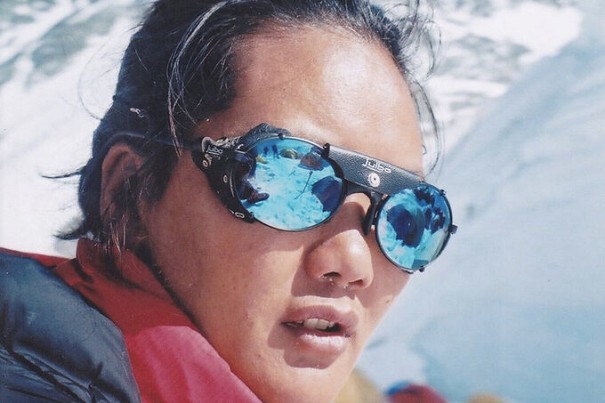

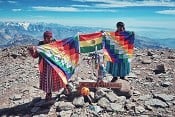
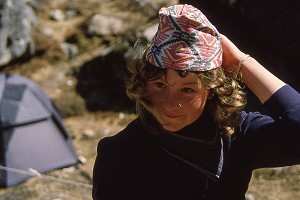
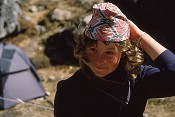
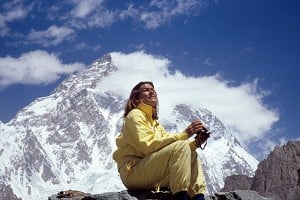
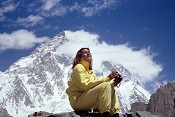

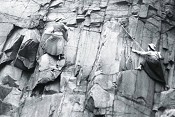


Comments
Disappointing to see an equal number of down votes to up votes for the article at present - I find it tricky to understand what the issue is with the article?
Lou was my guide for the Conville course in Chamonix last summer. She was phenomenonal and I cannot understate the boost that had on my confidence for alpine climbing, to the extent that myself and another woman on the course then went out and did a route by ourselves after the course, something I had never done before in the Alps, having only climbed with my male partner.
The old adage of "you can't be what you can't see" rings loudly for me everytime I'm out at a crag in winter and find I'm the only woman there. I have stayed at the CIC before when there have been at least 20 men and just one woman, young 22 year old (at the time) me.
Role models such as Lou and seeing more women guiding makes a massive difference to young climbers, thank you Anna for highlighting the space still left to cover.
I spent some weeks in the 1990s in the Alps with Brede Arkless as a guide, when she was contracted to Martin Moran, who I know from conversat In subsequent years had a lot of respect for Brede. She was the first female UIAGM guide. Whilst she had somewhat of a fearsome reputation I found her to be safe, interested and interesting and I learned a huge amount from her, and we got on with on a personal level too. A great guide and character in every respect.
The stats mentioned in the article are interesting, though perhaps predictable. Let’s hope the position improves over time.
A related area which the article doesn’t touch on is that there are now a lot more female pro and semi-pro climbers than there were 20-30 years ago. The role of social media in the climbing world is a topic in its own right, but one of the positives is that it helps top level female climbers to act as role models. On a related point, it would be interesting to know what proportion of UKC news articles over the past 2-3 years have featured women. These things all add up and help drive change over time.
Just to add, I started the BMG training scheme alongside Lou. Whilst I failed the summer rock assessment and gave up after deciding it was going to be too hard for me, Lou went on to qualify with first time passes all round. She’s certainly a much better mountaineer and skier than I ever will be. Reading that some clients try to outpace her was amusing - there’s a lot more to being a BMG than being able to walk fast, or bear down hard on a crimp, for that matter…
Best not to ask. There are always a few dicks on here who do this. They won't post to say what their problem is, but you probably wouldn't want to hear it anyway. The same thing happened with a really good article by an autistic climber a while back. So it's not just women they have a problem with.
It's now showing far more likes than dislikes, and well deserved too.
I personally have no issue with the article but it is comments like this that do keep people from talking openly about concerns they might have. I've no idea why somebody would downvote this but by politely inviting constructive discussion we can draw out honest feedback and talk about it. Lets not strawman anybody until we know what their issue is.
I learnt on here some time back that having your view challenged is a good thing, it either reinforces your opinion or allows you to develop a more accurate position.